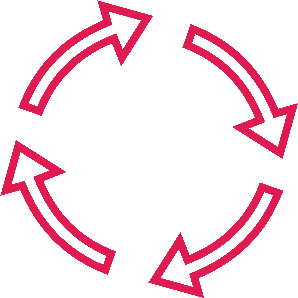Continuous Improvement – Myth or Reality?
Let’s be honest. Change is hard and takes a lot of work. It requires time, effort, and likely money to keep learning new things. Some organizations preach the idea of “relentless improvement”, but is this realistic when most of our teams are already over-worked and can barely keep up with existing priorities?
If we look at the Agile Manifesto (also known as the “Manifesto for Agile Software Development”), it actually does not explicitly state that we must implement continuous improvement; the only reference to this concept is “continuous attention to technical excellence”, which is quite different.
So, why is “continuous improvement” such an engrained part of Agile principles despite it not being stated as such in the Agile Manifesto? Also, is continuous improvement achievable under such conditions?
My response: Continuous improvement is a core tenet of the inspect and adapt mindset, which is only possible under very specific conditions.
What might those conditions be? Let’s explore!
Why should we continuously improve? Because we need to always look for better ways to do things? Is it realistic to expect most people to do this? In my experience, this mindset is very difficult to develop, and often takes years to develop if someone does not already possess some innate drive to improve.
I’m sure you have met people at your workplace who are always talking about the books they are reading, and also people who go a step further to try to get YOU to read those books! And if you don’t happen to want to read these books, they frown at you as if you just did something terrible! Does that sound familiar?
There will always be people who are super passionate about a certain topic, and make it their mission to learn as much as they can about that subject, both at work as well as outside of work. I believe that this type of individuals is the exception rather than the rule, and that most of us are happy to just get a job where we can contribute and do good work without too much stress.
If we wish to develop the mindset of continuous improvement, what can we do to encourage this kind of thinking?
As Agile Leaders, we will more than likely need to actively develop this type of mentality because we usually don’t have the luxury of hiring our own staff that possesses the perfect balance of knowledge, experience, and drive to learn new things. This means we need to learn how to cultivate this mindset somehow.
Here are a few things we could consider:
Idea #1 – Set aside time for innovation
Most of the time, we are all tasked at 110% (100% if you are lucky), which mean we have no “breathing room” to sit down and think about what we can do differently. We are usually not given the time or support to explore new ideas, processes, tools, etc. that could help the team as well as the organization. We are generally in a reactive mode rather than a proactive mode. If we can block off an hour or two per week to reflect and think, we might be able to develop new skills or ideas that can make a big difference.
Idea #2 – Set short-term goals
If you are like me, you probably have a long list of things you need to do, both personally and professionally, and the list never feels like it’s getting any shorter. One possible solution is to set short-term goals that is relatively easy to achieve; give yourself a week or two to accomplish something meaningful. Don’t push the date out, but evaluate where you stand when the milestone is reached. Think about what helped you meet that goal (or got in your way of achieving the goal).
Idea #3 – Shorten the to-do list
If you want to have time to do learning activities, you must make time for it. Focusing on fewer tasks at a time should help you become more efficient and create more room for innovative thinking. Instead of having 10 tasks that are all “in progress”, try to focus on just 2 or 3, and see if that improves your output.
In closing, continuous improvement or learning can only occur if you have the mindset AND the time to dedicate to it. This means you need to make a commitment to yourself to make that change. It will be difficult, stressful, and likely painful, but it could also lead to great rewards in the long run.




